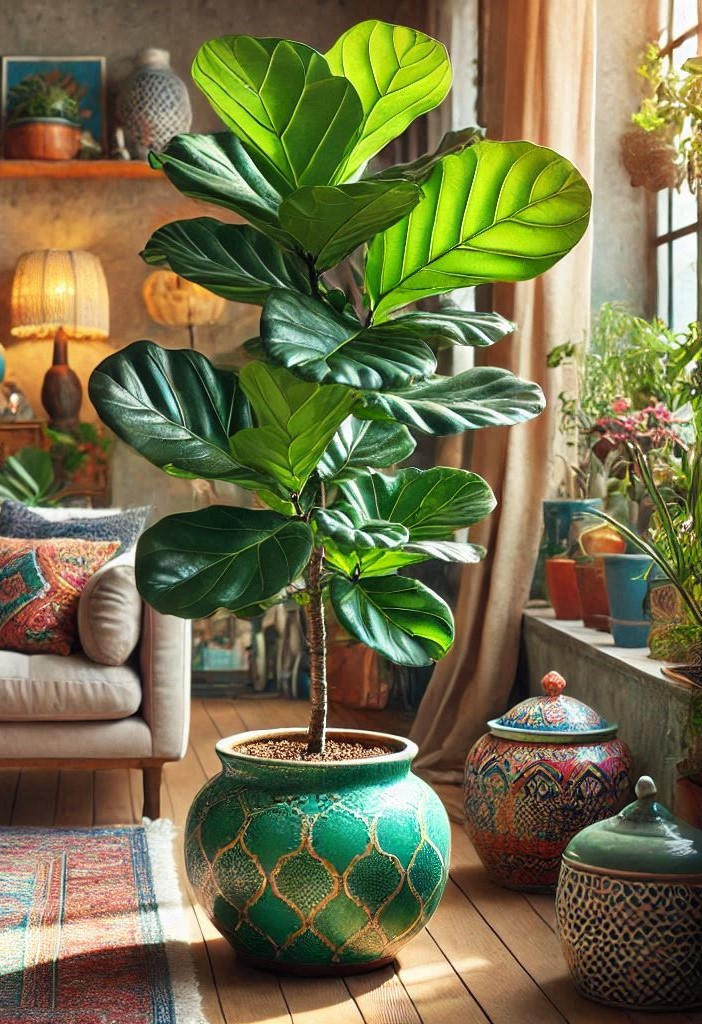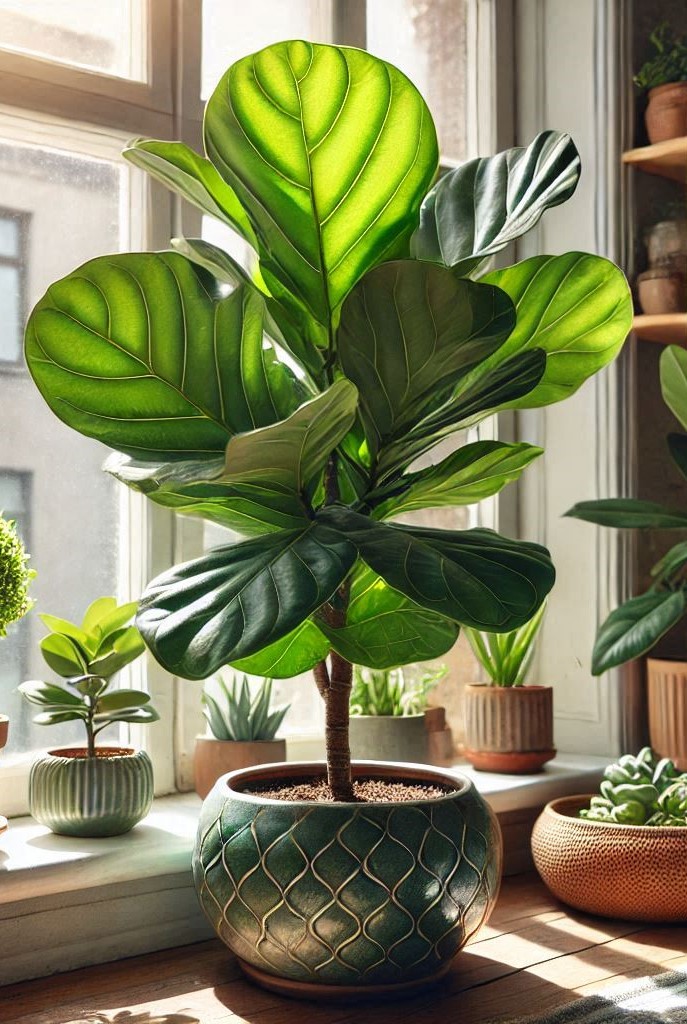
Maintaining a healthy fiddle leaf fig starts with providing the right lighting conditions. Placing it near a large window with filtered light usually does the trick. If natural lighting is not available, supplementing with indoor grow lights is a smart way to boost illumination in darker rooms.
Temperature and humidity play a big role too. Fiddle leaf figs thrive in warm areas, ideally between 60 to 75°F. Sudden temperature changes, like drafts or nearby heaters, should be avoided. As for humidity, these tropical plants enjoy it on the higher side. In drier climates, you might find a humidifier helps or grouping plants together to boost moisture in the air.
Fiddle leaf figs grow well in moderately moist soil, so you should water once the top inch of soil is dry, being careful not to overwater. Signs of overwatering are yellow leaves or a musty smell in the soil and can ultimately lead to root rot. On the other hand, dry, crispy leaves can signal you’re not giving enough water.
Misting your plant can be useful as long as you do not over-mist because it could lead to a fungal infection or even a pest infestation. Some people prefer to wipe down the leaves with a damp cloth instead, which also keeps dust off and allows the plant to breathe better. Another thing to watch out for is high levels of salts in the soil. Flushing the soil several times once a month can keep the salts from building up.
Maintaining Health and Happiness for Your Fiddle Leaf Fig
Fiddle leaf figs require specific care routines to keep them thriving. Regular fertilizing keeps your plant in top shape. A balanced, water-soluble fertilizer used during the growing season—spring and summer—encourages strong growth. Just be careful not to overdo it since too much can harm more than help.

Pruning isn’t just for appearance; it’s essential for your plant’s well-being. If you spot brown leaves, it’s okay to trim them off. Use clean scissors, cutting at the base of the damaged leaf. This prevents unnecessary stress and encourages new growth in those spots.
You should repot your fiddle leaf fig every year in the spring. Choose a container that’s about two inches larger in diameter and add some potting mix into the new pot to cover the bottom. Place the plant in the pot and fill around the plant with potting mix, leaving an inch or two of space below the rim of the pot.
Fiddle leaf figs, while generally resilient, can sometimes encounter pests like spider mites or fungal infections. Routine check-ups help catch these early. Washing leaves with mild soapy water or neem oil can combat small pest issues before they become bigger problems.
Mistakes to Avoid in Fiddle Leaf Fig Care

There are some common mistakes you’ll want to avoid to keep your fiddle leaf fig in good health. Keep the soil moist but well‑drained—see our tropical plant care tips for how to maintain optimal humidity and prevent soggy roots.
The type of soil you choose matters a lot. Fiddle leaf figs need a nourishing, loose soil mix that retains moisture without staying too wet. Avoid compact, heavy soils that can suffocate the roots, stunting the plant’s growth. Some fiddle leaf fig enthusiasts use orchid potting mix for healthier roots.
Placing your plant in a brightly lit location, with good air flow is paramount. These figs don’t appreciate being moved around frequently. Each new spot has its own light and temperature variance, which can cause stress. Find a dedicated home for your plant where it can stay.
Keep those beautiful leaves clean. Dust accumulation can block light, hindering photosynthesis, and make the plant more vulnerable to pests. Gently wiping the leaves with a damp cloth regularly helps keep the plant healthy and looking its best. If planning to expand your indoor garden beyond the fiddle‑leaf fig, consider pairing it with easy indoor plants to complement your care routine

What an interesting and informative post! I have to admit that I had to google ‘Fiddle Leaf Fig’ but I go quite an education. Your post here is both informative and insightful. I really like how you gave ideas for the care and nurture of this plant. As for me, I hate to tell you, but even my plastic plants have trouble surviving in my house. Thank you for a great post.
Thank you Walter. I’m so glad you enjoyed the article. Maybe you could sneak a little Fiddle Leaf Fig in and your plastic plants won’t mind.